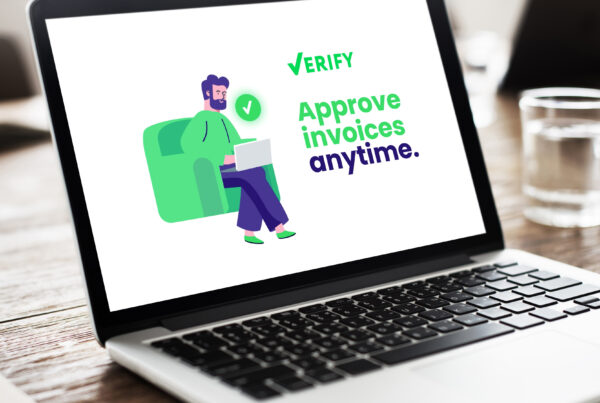Do you dread the return to work after taking a vacation? You may be away, but the work doesn’t stop, and it’s all there waiting for you once you return.
There is no way to completely reduce the amount of work you need to do upon coming back to work, but if you have the systems and processes in place outlined in these 5 steps, your return will be much easier next time.
1 – Reduce the number of emails you need to go through with automation
Setting an ‘Out of Office’ on our emails detailing when we’ll be back and who to contact while we’re off can reduce some of the emails we receive. However, this doesn’t completely stop the influx of emails that you still need to go through when you get back. Leaving you spending your time sorting through the hundreds of junk emails to find the few important ones.
The process doesn’t just involve reading through all your emails either. You need to then spend time following up on the important ones, chasing updates from colleagues to ensure they had both seen the email and actioned it.
To combat these problems, some of us will regularly check our emails while we’re off to clear up the junk and ensure our colleagues have kept on top of everything by forwarding them important emails.
One solution is automating your emails and storing them in a document management system with workflows.
This prevents your inbox from becoming an information silo while you are away. Once in the document management system, the right staff have access to the right information at the right time. Documents that require further action can be placed in a workflow so team members can see them progressing and who has the next action.
2 – Delegate supplier invoice approval to another colleague
If you have the responsibility of approving some supplier invoices in your business, you will understand this pain: Coming back to work after taking a vacation to find that you have many invoices to approve immediately else key suppliers would be paid late.
This is stressful, time-consuming, and doesn’t give a good impression to suppliers if they aren’t being paid on time because you were off.
The solution? Delegate out invoice approval to other colleagues during the time you’re off.
The easiest and most controlled way to do this is by using an automated accounts payable system. With some of these systems, you can easily delegate authority to substitutes while you are away. The invoices will then be automatically routed to this person or group of approvers. These systems normally provide visibility of the status of each invoice in the process and audit trails, so if you need to look back at an invoice in the future, you can easily see who worked on those invoices.
This means everything will continue being processed in time, your suppliers will easily be able to get updates on invoice status, and you can see what has happened while you’ve been away.
3 – Don’t book any meetings for your first couple of days back
With most of us working remotely full time or part-time now, it is so easy to have too many Zoom meetings booked in your calendar. What many of us worry about is having one booked in during the first couple of days back, especially one booked in without our knowledge while we were still away!
This can be stressful when you’re in the middle of adjusting and catching up after you get back to work, especially if you need to do some preparation work for each meeting.
The best way to prevent this is to block out those first couple of days back as being ‘busy’ on your calendar. You could do this straight after your holiday request has been accepted to stop yourself from forgetting.
This way, you won’t accidentally book meetings for when you first come back, and your colleagues won’t book that time up while you’re away either. Instead, you could spend these days catching up on what you have missed and have a bit more time to prepare for each meeting.
4 – Automate document processing to make keeping track of work easier
Usually, on our last couple of days before finishing for annual leave, we delegate some of our jobs to the rest of our team to ensure continuity while you’re away.
But, when you get back, it can be challenging to see the status of work in the process and what work needs to be actioned first. Without a visible process in place, you then need to spend your time chasing your colleagues for updates on each of these jobs, not knowing what they had done, and trying to pick up from where they left off.
Likewise, we all worry about whether that work is actually being done and if our colleagues have forgotten about that important task you’d left to them.
One way to make this easier is by automating your document workflows. If a task is always completed in the same way, you can automate the processing of documents, using documents saved into your document management system.
The workflow ensures the document is sent to the right person or group of people in your organisation and creates an audit trail showing who did the work and when. This makes it easy to see the list of tasks they have been allocated, and other members of the team can see the status of the document to respond to queries about its progress or help advance the task to completion.
The workflow can be set up so that reminder notifications are sent to colleagues in case your colleague has overlooked a task, and they can tick off the tasks as they are complete to move the document along in the process.
This means on your return, you can see exactly where they have got to, what work they have and haven’t done, and you have peace of mind about what work they achieved while you were off. You can also figure out what jobs take priority over your first few days back so everything can be completed on time.
5 – Take a moment to reflect on what you can learn from your absence
If you are tempted to just jump into action on your return to work, you may be missing a great learning experience.
As the famous quote goes, insanity is doing the same thing over and over and expecting different results.
One of the best ways to prevent the dread of coming back to work after a break is to make changes to your systems and process to ensure it will be easier in the future.
Take some time to identify the bottlenecks arising because of your absence. Could these have been avoided by delegating tasks before your departure, or was this not possible? Perhaps they were because your processes could not accommodate the absence, or your systems were not capable of dealing with the changes required? Or was there a people problem, a lack of training or ability? Taking a moment to consider this may be more painful at the current time but will pay dividends for the future.
The benefits of acting on this reflection will go beyond dealing with some of the stress arising from your annual leave. Improvements in processes and systems should help improve visibility, efficiency and control in your organisation in the long term, not just when you’re on vacation.



